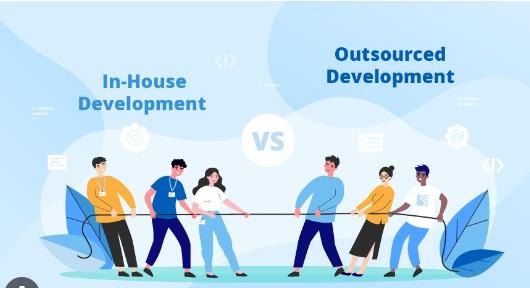Outsourcing vs. In-House Facility Management & Operations










• Effective facility management is crucial for businesses and organizations to provide a safe, productive, and comfortable environment for employees and clients.
• It encompasses a wide range of functions, from maintenance and security to space planning and sustainability initiatives.


• Facility management can be handled in-house, where an organization manages its facilities and operations internally, or it can be outsourced to a third-party facility management company.

• Each approach has its benefits and challenges, and choosing the right one can significantly impact an organization's success.
Would you like to explore facility management services

Outsourcing facility management involves partnering with external experts or service providers to oversee and manage various aspects of facility operations.
This can include maintenance, security, cleaning, and more.


Outsourcing can lead to cost savings, access to specialized expertise, and reduced administrative burdens.

It allows organizations to focus on their core operations while experts manage facility-related tasks.



Challenges of outsourcing include the potential loss of control, concerns about service quality, and the need for effective vendor management.
It's crucial to choose the right service provider and establish clear expectations.
Management:
• In-house facility management offers greater control over operations, immediate response to issues, and the ability to align facility management with the organization's culture and goals.
Managing facilities internally can be resource-intensive and may require hiring and retaining skilled staff.
It can also limit access to external expertise and specialized services.



• Organizations must assess the costs associated with both outsourcing and in-house management, considering factors such as labor, equipment, and maintenance expenses.





• Consider the ability to adapt to changing facility needs and the scalability of your chosen approach to accommodate growth or downsizing.


• Assess the impact of each approach on risk management, legal compliance, and liability.


• Factors to Evaluate: factors most critical to your organization, including cost, control, expertise, and the strategic alignment of facility management with your overall mission.
• Balancing Cost, Quality, and Control: between cost-effectiveness, service quality, and control is essential in making an informed decision.

• Consider creating a hybrid approach that combines elements of both outsourcing and in-house management to best suit your organization's unique needs.
• Find out more on Information Flow in BIM throughout faci lity operations

• Preparing for Outsourcing or InHouse Transition

• Plan and prepare for a smooth transition, including communication with stakeholders, staff training, and the development of transition timelines.
• Smooth Implementation Strategies
• Implement your chosen approach while monitoring and adjusting strategies as needed to ensure success.

• Technology Integration: integration of advanced technologies like IoT, AI, and smart building systems to enhance facility management efficiency.
• Sustainability and Green Initiatives: Stay updated on sustainable practices and environmental initiatives to reduce energy consumption and minimize environmental impact.



• Data-Driven Decision-Making: Leverage data analytics and reporting tools to make informed decisions and optimize facility management strategies.

• Choose the facility management approach that aligns with your organization's goals, resources, and operational requirements.
• To know more, get in touch with facility management and operatio ns service provider in USATejjy Inc. at 202-465-4830 or
info@tejjy.com.